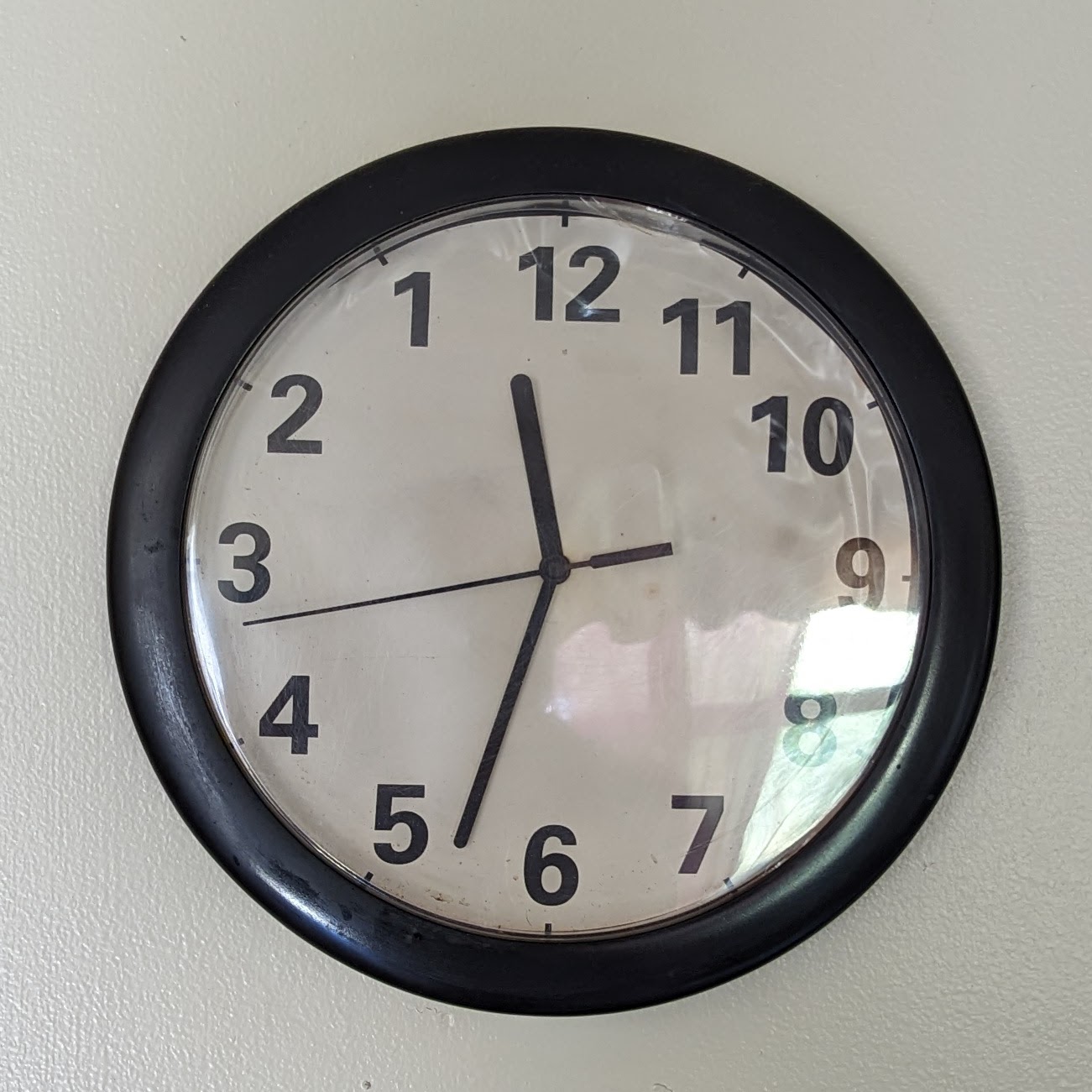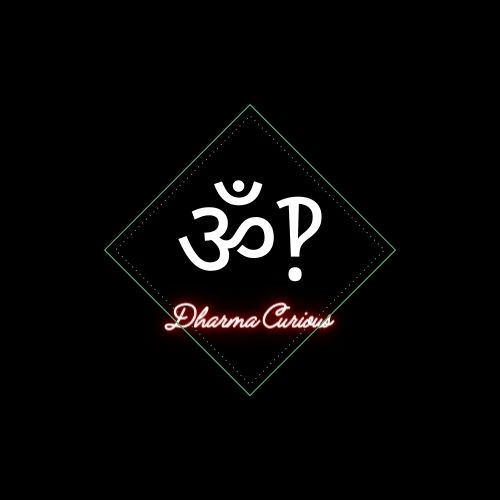Was there an alternative adjective to “clockwise” other than “the rotation you take around left hand”?
Also, how did all watch companies around the world agree on what the direction of “clockwise” is?
“Sunwise”, and for the exact same reason.
Clocks go clockwise because their predecessors did. What were their predecessors?
Sundials.
How does the shadow go around a sundial? Well, sunwise, of course.
Counterclockwise, as said in another comment, was “widdershins”, from a Middle Low German phrase meaning “against the way”.
I find it interesting that in Swedish the opposite of sunwise is “motsols”, i.e. counter sunwise or literally “against the sun”. Sunwise is called “medsols”, lit. “with the sun”.
ILJM.
deleted by creator
Widdershins needs to make a comeback. It’s a cool word
It seems like something a pirate would say. Widder me shins, but that’s a cold wind blowin’!
Also turnwise. Also we need to switch from a globe to a disk on the backs of four cosmic elephants, who are themselves on the back of a giant turtle
I am trying to picture it, but I think the sunwise convention only works in the Northern hemisphere.
Yep - in the northern hemisphere a sundial shadow will move from west to east in a clockwise fashion; in the southern hemisphere it still goes west to east but does so moving anticlockwise.
And if I’m thinking about this correctly, people between ~20N and ~20S latitudes will have it reverse throughout the year and and sometimes be a straight line.
Wait, it’s all anglo-centric?
Always has been.
🌍🏴🧑🚀🔫🧑🚀
That made me curious, so I tried to find a pre-clock synonym in Indonesian. The best answer I have is by translating “Sunwise”, which became “dr kiri ke kanan” or “from left to right.”
Which make sense, if something is going clockwise around you, that’s what you’d see. No idea if that was a real phrase or an artifact of machine translation, though.
I somehow read this comment in the voice of the cleric performing the “mawwiage” ceremony in Princess Bride.
Cleric: “Sunwise…” long, uncomfortable pause. “And for the exact same weason.” Pause. “Clocks go clockwise because their pwedecessors did… and what were their pwedecessors?”
Humperdink: “Look, can we hurry this up?”
Cleric: “Sundials.”
Humperdink: “Just skip to the end!”
Cleric: “Countewclockwise… as said in another comment… would be… widdershins.”
Haha, thank you for this!
Yes but, how did people know that time went sunwise before the sun?
Yes but, how did people know that time went sunwise before the sun?
Back before the solar system was fully formed, it was called “gaswise”.
Hi Dad! It’s me, Dad.
Sundials are also responsible for why we say “o’clock”. It’s a differentiatior. Because the speed of a sundial would vary based on the time of year while a clock was constant, you had to clarify what kind of time you were talking about. Did you mean 10 of the clock or 10 of the sun? (Basically no one said o’sun, if you didn’t specify, it was assumed you meant by the sun.) Somehow, that stuck around long after sundials fell out of common use.
I would have thought it was abbreviated from “on the clock”
I’ve just find (in wiktionary) the word “moonwise”, meaning antisunwise/counterclockwise. But the moon moves the same way as the sun does. So is there some deeper meaning based off of some long-term patterns in lunar movement, or is it just simple antagonism sun×moon?
That’s what it appears to be. This is supported somewhat by the term “moonwise” not having a lot of historical usage, leading me to believe that it came along much later by someone who wanted a related antonym.
The only bit about the moon that seems to travel right to left are it’s phase changes, and even that is because we’re outside the rotation and watching along it’s horizontal plane. You’ll see the same thing with anything spinning clockwise in front of you: the closer edge goes right to left, the farther edge goes left to right.
You just made my brain click. I’ve always wondered why clockwise rotation around a vertical axis was commonly agreed. I have never seen a mechanical- or electrical clock installed flat on the ground. So why would we assume that the clock isn’t in the ceiling facing down, which would reverse the direction?
But now that you mention it in the context of a sundial, it seems so obvious that the clock is just an extension of that, making the sun and clock a common reference.
But that bids the question if they have another term for it in the southern hemisphere.
It’s been very difficult to find an answer for this, and I suspect it’s because most of the southern hemisphere is water, and most of the rest of it was colonised by people from the northern hemisphere. As of right now, I couldnt say if there simply weren’t words for that kind of rotational motion or if my google-fu simply isn’t strong enough.
The best answer I’ve been able to find is from Indonesia, which is equatorial. The word “sunwise” translates into a phrase “from left to right” via Google Translate, but that may just be an artifact of machine translation.
I didn’t even consider equatorial countries. That’s interesting as well. Depending on the season, the literal “sunwise direction” would change, while spring- and autumn equinox wouldn’t translate to any rotation around a vertical axis.
I used to be a swing dance instructor, and describing rotation as “to the left” or “to the right” always seemed a bit more natural and understandable for the general participant.
Well, clocks are just mechanical sundials. Before clockwise, there was sunwise (or deosil), and clocks’ movements are based off of the movement of a shadow across a sundial.
Used to be sunwise and counter-sunwise.
Ok, but how about before the sun?
Galaxywise and counter-galaxywise
and the rival; pixelwise and counter-pixelwize
does that mean that “clockwise” in the southern hemisphere is backwards?
Yes, when you are in the northern hemisphere, a sundial shadow falls to the north of the gnomon (the thing that makes a shadow). This makes the shadow move from the northwest to north to northeast over a day, which is clockwise. In the southern hemisphere, the shadow from the gnomon falls to the south, so it starts in the southwest and moves to the south and then southeast, which is anticlockwise.
The most obvious way to see this is the photo of the sundial in Perth, where the hours run anticlockwise.
https://twitter.com/culturaltutor/status/1605415745093083137?lang=en https://en.wikipedia.org/wiki/Sundial#In_the_Southern_Hemisphere https://en.wikipedia.org/wiki/Sundial#/media/File:Sundial_in_Supreme_Court_Gardens,_Perth.jpg
Yes, because of the Coriolis effect (/j)
No, because the earth is still rotating the same direction in the southern hemisphere
I read this article and I’m more confused now lol
https://en.wikipedia.org/wiki/Sundial#In_the_Southern_HemisphereEDIT: The last sentience sums it up well tho:
On horizontal northern-hemisphere sundials, and on vertical southern-hemisphere ones, the hour marks run clockwise.
Well well, learn something new everyday.
Pretty weird to think about. And about them having to either face their relevant poles or the equator for them to work equivalently
Northern sundials (both vertically mounted and horizontal versions) need to be pointed North, whereas Southern sundials need to be pointed South. The article is stating that Southern horizontal versions can be mounted vertically in the Nothern hemisphere but must be pointed South. I hope that helps, I had to re-read it a few times, myself.
A guy I know owns this clock, which basically proves that everything in life is pointless and arbitrary:

I find this deeply unsettling, please delete
I might be evil because now I want a clock like that only with the 1 starting where the 4 is.
I don’t think you’re evil, but there is definitely something wrong with you. lol
It wouldn’t be that hard. Once you get a clock like this with the reverse movement, you can just open the face glass, remove the hands, and print a new graphic for the background.
deleted by creator
Weird, this feels easier to read. Less grating somehow.
You left-handed?
Hey, don’t put us all in the same bag ! I am left-handed and i still got weirded out by it. He’s just a weird guy that may happen to be left-handed.
I’m also left-handed and weirded-out by it. I was just wondering, lol.
Also, right-handed people suck. Southpaws unite!
Left Bros for life!
Hell yeah, haha!
One day we will control the world and force right handed people to use tools made for left handed people and we will finally give them a taste of our eternal struggle, muahahaha !!
deleted by creator
Hell yeah brother (or sister)!
Am a brother, brother.
Nope. Right handed. But AuDHD like there’s no tomorrow…
I guess you’re ok. I’m more of an ass man, myself, but I’ll allow it.
Thank you arse lover
I have one of these, it was a gag gift from a friend. I’ve had it up so long now though I have to double check which clock in looking at before I tell the time because I’ve got so used to it
That’s pretty cool. Also, your username contains an anagram of the name of the man who owns the clock from my comment. That’s also pretty cool.
Oh, you mean like the order of the Alphabet?
That’s actually the only non-arbitrary thing in existence. If the alphabet wasn’t in alphabetical order, we’d all be dead right now.
This is correct. Alphabetical Order is one of the fundamental laws of nature. A universal constant.
I like how I was joking but we still ratio’d that guy.
Alphabetic order is completely facist nonsense. Obviously the n should come before the m. You wouldnt put w before u, would you?
#wakeupsheeple
Also why the seemingly arbitrary graduations, 24 hours, 60 minutes, 60 seconds. If it was say 10 hours in a day, 100 minutes in an hour, 100 seconds in a minute, seconds would be close to the same amount of time. Same with latitude and longitude, why 360 degrees in a circle with 60 minutes in a degree and 60 seconds in a minute.
These numbers aren’t arbitrary, they are from different base numbering systems.
60 can easily divide by 2, 3, 4, 5, 6, and 10.
12 can easily divide by 2, 3, 4, and 6 (notice how much overlap there is).
10 only divides easily by 2 and 5. Common fractions like 1/4 or 1/3 now require decimals.
Basically, base 12 and base 60 make it significantly easier to think and work in common fractions.
It is also historically significant, as base 12 used to be more common than modern base 10. Our timekeeping system dates back to the ancient Babylonians, who worked in base 12. This influence is still felt in other places, such as the fact that eleven and twelve have unique names in many languages rather than following the same pattern as everything that comes after them.
deleted by creator
Morning, midday, evening and night are arbitrary. Why not just morning and night? Why not morning, mid-midday, midday, evening, mid-evening, and night?
The number of seasons is likewise arbitrary. Some Native American tribes had more than 4 seasons.
The short explanation is that those numbers are more easily divided by a larger set of denominators. 24 is divisible by 2, 3, 4, 6, 8, and 12. 100 is divisble by 2, 5, 10, 25, and 50. 60 is divisible by 2, 3, 4, 5, 6, 8, 10, 12, 15, 20, and 30.
Metric is great for scaling up and down ad infinitum, but it sucks for fractions. Fractions are easier for daily use without precision measuring equipment.
The units of time we use come from a bronze age civilisation that used base twelve instead of base ten. They’d count on their hands using the finger joints of one for single digits, and then the joints of the other for multiples.
That’s called Decimal time and revolutionary France already tried it.
Other commenters hit on the reasoning, just adding that they’re called highly composite numbers. My favorite!
You just flipped the image!
(/s)
Turnwise and widdershins. I read it in a book once.
Sunwise, as it was based on the movement of the sun during day (in the Northern hemisphere). As watch faces were modelled after sundials, sunwise and clockwise describe the same direction.
Turnwise is a word invented by Pratchett for a book, but it’s clearly based on sunwise. He also used widdershins in his book, which is indeed the unmodified antonym to sunwise.
Not just any book. The discworld series. It’s the direction the disc rotates! He has so many easy to miss spots of genius. Amongst many easy to see spots of genius
Does the sun rotate with the disc, and faster?
Wouldn’t sunwise and turnwise be in opposite directions otherwise?
The sun rotates around the disc too one of the elephants has to cock its leg every day
I have found my people.
Deosil (sunwise) was the opposite of widdershins (against the usual). Both had a wide range of uses too, not just directionality.
Was it Name of the Wind or Wise Man’s Fear? I just read both of those and I remember looking up one of the words and going down a Wikipedia rabbit hole.
No, those words don’t appear in those books. He’s referring to Discworld by Terry Pratchett.
Well shit… those are the only two books that I read recently, maybe a similar word… I left my kindle at home today I know that keeps track of words I’ve looked up and now I’m curious
Turnwise and widdershins
I always heard it as ‘deosil and widdershins’
As a non-native English reader, I now am not sure if this is a Pratchett reference or if these are actual round world terms…
Pratchett’s just using real-world (albeit archaic) terms: widdershins and deosil.
Ironically, I believe ‘turnwise’ is the one that’s made up – by Terry Pratchett.
GNU Terry Pratchett
Good question!
The real answer seems to be “right” and “left”.
Up and down?
Imagine you’re in the Northern Hemisphere and you face east toward the rising sun. Over the course of the day, the sun will seem to move to the south, and then set in the west. This forms a “sunwise” turn, which is what we now call “clockwise” because we made clocks in imitation of sundials.
In Swedish it’s called medsols and motsols. The iteral translation is with the sun and against the sun.
Is there a large perceptible pronunciation difference? Because if not med and mot being opposites seems like it’s rife for sitcom hijinks
There is, yeah, /meːd/ and /muːt/
Thank you! That makes sense, I forgot north Germanic languages don’t do final devoicing. In German, the d would be pronounced as /t/ in that position.
You rarely hear voiced plosives in spoken German in general. Negative VOTs are virtually unheard of. The distinction would be more accurate if described as aspirated/unaspirated than unvoiced/voiced.
I guess what I wanna say is that German 'd’s are most likely gonna be realized as /t/, no matter where they occur in the utterance.
Deosil, which is the direction the shadow on a sundual moves (in the Northern Hemisphere).
This turned out to be a surprisingly fascinating question lol.
As someone who still confuses these “turn it around that way” - jiggles hand in vague motion- “oops no the other way” usually works just fine.
Semi related: QI uploaded this bit the other day about an aboriginal tribe that can flawlessly pinpoint north/east/south/west.
Cardinal directions as references instead of left/right are often a better option when describing locations, more people should use them. It’s not like it’s hard to get an idea of where north is - even if you’re a bit challenged on the spatial awareness front basically everyone these days has a phone that will easily tell you this.
I think saying “keep turning the component to the west” wouldn’t really work.
There are obviously exceptions, hence why I said often instead of always. Think larger scale and/or involving fixed objects and cardinal directions tend to be logical, for example:
-
Install the equipment in the western plant room.
-
Please set up the workstation near the power point on the western wall of the room.
-
Come in via Foo Rd, when you get to the intersection with Bar Rd turn west.
-
My desk is in the south western corner of the office.
-
Walk west along the ridge from the carpark, then once you reach the giant boulder take the northern spur down to the river.
-
To your second question, the direction of clockwise is mostly influenced by sundials. In the northern hemisphere the shadows move in a clockwise direction, and so the early clocks made in the northern hemisphere mimicked that. In the southern hemisphere it’s naturally reversed, but because so much of that hemisphere is either empty ocean or colonized lands, the clocks move in the same direction. Bolivia had a sort of flash in the pan moment in the news about a decade back for reversing their clock direction on a big central clock (think like big ben) as a way of staking their independence from a colonial past.
On the first question, I have no idea. But in Sweden they use terms that translates to “with the sun” and “against the sun” but I don’t remember what they are without googling it.
In czech, we have a phrase “jak sa kráje chleba” (same way as a bread is sliced). Problem is, that (at least in my social group) nobody knows, wether it means clockwise or anticlockwise, as everybody slices the bread differently.
same way as a bread is sliced
Haha interesting, but how do you slice bread by rotation? it’s up to down. That’s how you cut stuff.
- Grip the bread vertically to your chest.
- Start cutting in direction from the front to the back.
- Slowly rotate the bread, so you cut the crust only in one point (the tip of the knive moves through already cut bread).
It may be easier to see it with a short knive.
It’s just negative rotation
Yes, but it’s learning optimism.
I have the feeling that the direction of the water in the toilet when flushing plays an important role here.
Ah yes, turdwise and widdershits as it was known in the olden days, before the invention of sundials
The first mechanical clocks were invented around 1300. The first flushing toilet was 1775.
“we don’t have clocks, how do we describe right ways or leftways rotation?”
“Well, the tires on my Dodge Ram 3500 rotate to the right when I drive it forward, so we’ll call it ramforward and rambackwards”
“Brilliant”
Yup. That’s definitely “down”.



















